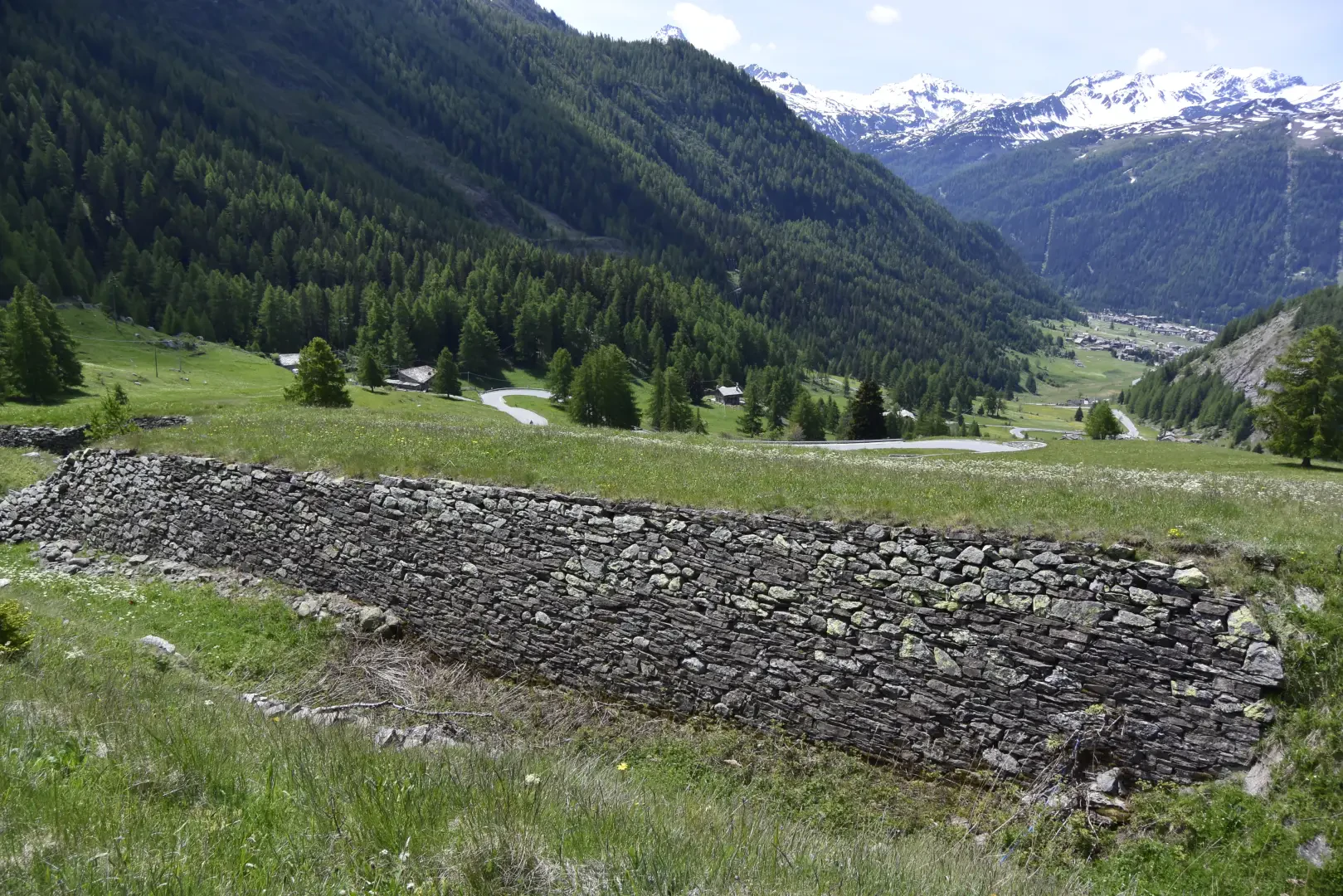Prince Thomas' Trenches, from Petosan

Introduction
More than a walk, it is four steps beyond the car park, just to enjoy the view and discover a historical curiosity.
Description
The Petit St Bernard has always marked a crossing point between one side of the Alps and the other, and often a fragile political-military barrier, even though one and the same state (that of Savoy) united the two sides. Thus the need arose to build a second bulwark against recurring invasions by French troops.
As early as the 16th century, the ridge above the village of La Thuile was identified, on the opposite side to the one that climbs to the famous pass. But it was not until the following century, in conjunction with the plague epidemic (1630), that Prince Tommaso of Savoy-Carignano, to whom his father, Duke Charles Emmanuel I, had entrusted the defence of Tarentaise and the communication routes between the two Alpine sides, had the idea of permanently installing troops on the heights of La Théraz and having fortifications built.
By the end of the 17th century, they reached an extension of about 400 m and were supported by other works, including lookout posts on the surrounding mountains.
In battle, these trenches had mixed fortunes: in 1691, they were not enough to stop the troops of General La Hoguette, who, in the name of the Sun King, repulsed all resistance as far as Aosta. In 1704, it was the turn of the Duke of La Feuillade to overcome the resistance of the Valdostan soldiers. In the spring of 1794, on the other hand, the defence was much tougher, also because it was supported by Austro-Sardinian soldiers. The French revolutionaries took the positions of Traverset (where the chairlift connecting La Thuile-La Rosière now arrives) and swooped down on the Valdostan village, where they remained pinned down for two years before being able to break through the enemy lines.
Riferimenti Bibliografici
- Les retrenchements du Prince Thomas à La Thuile - Saluard Robert - Le Flambeau, n°182, Aosta, 2002, pag 110-122.